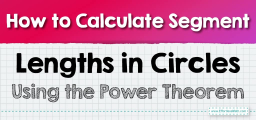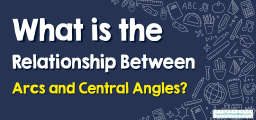Conic Sections
Conic sections or sections of a cone are the curves obtained by the intersection of a plane and cone. In the following guide, you will learn more about the types of conic.

There are three major sections of a cone or conic section: parabola, hyperbola, and ellipse (the circle is a special kind of ellipse). A cone with two identical nappes is used to produce the conic sections.
Related Topics
- Classifying a Conic Section (in Standard Form)
- Standard Form of a Circle
- How to Write the Equation of Parabola
Step by Step guide to a conic section
Conic sections are the curves obtained when a plane cuts the cone. A cone generally has two identical conical shapes known as nappies. We can get various shapes depending upon the angle of the cut between the plane and the cone and its nappe. By cutting a cone with a plate at different angles, we get the following shapes:
- Ellipse: An ellipse is a conic section that forms when a plane intersects with a cone at an angle.
- Circle: A circle is a special type of ellipse in which the cutting plane is parallel to the base of the cone.
- Hyperbola: A hyperbola is formed when the interesting plane is parallel to the axis of the cone and intersects with both the nappes of the double cone.
- Parabola: When the intersecting plane cuts at an angle to the surface of the cone, we obtain a conic section called a parabola.
Conic section parameters
Focus
The focus or foci (plural) of a conic section is the point (s) about which the conic section is created. They are specially defined for each type of conic section.
A parabola has one focus, while ellipses and hyperbolas have two foci. For an ellipse, the total distance of a point on the ellipse from the two foci is constant. A circle, which is a special state of an ellipse, has both foci at the same place and the distance of all points from the focus is constant.
A parabola is a limiting case of an ellipse and has one focus at a distance from the vertex, and another focus at infinity. The hyperbola has two foci and the absolute difference in the distance of the point on the hyperbola from the two foci is constant.
Directrix
Directrix is a line used to define conic sections. A directrix is a line that is perpendicular to the axis of the cone. Each point on a cone is defined by the ratio of its distance from directrix to focus. The directrix is parallel to the conjugate axis and the latus rectum of the conic.
The circle has no directrix. A parabola has \(1\) directrix, ellipse, and hyperbolic have \(2\) directions each.
Eccentricity
The eccentricity of a conic section is the constant ratio of the distance of the point on the conic section from the focus and directrix. Eccentricity is used to uniquely define the shape of a conic section. It is a non-negative real number. Eccentricity is denoted by “e”.
If two conic sections have the same eccentricity, they will be the same. As eccentricity increases, the conic section deviates more and more from the shape of the circle. The value of \(e\) for different conic sections is as follows:
- For circle, \(e = 0\).
- For ellipse, \(0 ≤ e < 1\)
- For parabola, \(e = 1\)
- For hyperbola, \(e > 1\)
Related to This Article
More math articles
- The Ultimate 7th Grade TCAP Math Course (+FREE Worksheets)
- What Kind of Math Courses Are Required for Business Degree?
- Decimal Dynamics: How to Master the Art of Adding and Subtracting Decimals
- 3rd Grade ACT Aspire Math Practice Test Questions
- Top 10 Free Websites for TASC Math Preparation
- 5th Grade NHSAS Math Worksheets: FREE & Printable
- FREE SSAT Middle Level Math Practice Test
- Top 10 Tips to ACE the ASVAB Math
- Why Math is a Difficult Subject?
- SAT Vs PSAT Tests


























What people say about "Conic Sections - Effortless Math: We Help Students Learn to LOVE Mathematics"?
No one replied yet.